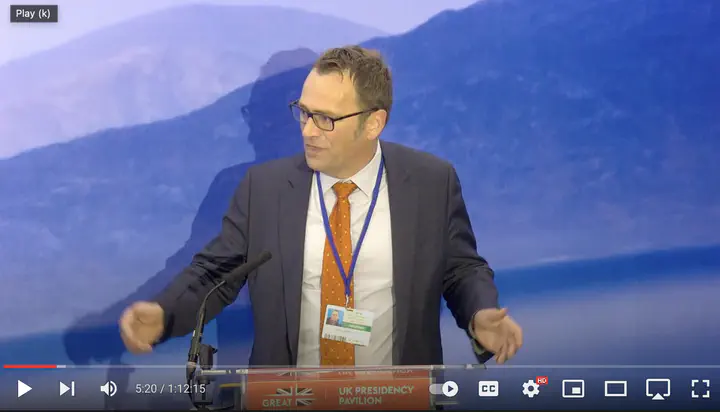COP26 | Defining and Measuring Systemic Resilience

The Systemic Resilience event from the Coalition for Climate Resilient Investment (CCRI) in collaboration with the governments of Jamaica and the UK, and senior representatives from private and international financial institutions, focused on the challenges and progress in the field of systemic resilience to physical climate risks, with a particular emphasis on supporting the most vulnerable countries to attract capital for redefined resilience needs.
Professor Jim Hall, leader of Oxford University’s OPSIS research group presented the Systemic Resilience Assessment Tool. The unique analysis and modelling covers energy, water and transport infrastructure and is being piloted in Jamaica.
Professor Hall explains, “Our research of the seven largest storms in Jamaica since 2004 has demonstrated how infrastructure impacts are amongst the most severe, accounting for 15% to 90% of the total damages. Infrastructure has the potential to lead to systemic impacts across a whole state but also through supply chains rippling around the world. Infrastructure is also really important because it’s where vulnerabilities get locked in for the future – choices made now about infrastructure investment could lock in vulnerability for years to come.”
In creating the Systemic Resilience Assessment Tool, the OPSIS team:
- Quantified and mapped climate risks
- Identified options for climate risk management (including infrastructure strengthening and maintenance, nature-based solutions, system resilience such as diversification and back-ups, insurance and financial protection)
- Quantified the risk-reducing benefits of resilient infrastructure
- Prepared a pipeline of resilient investment options
Professor Hall added, “This national investment prioritization tool will enable decision-makers to assess climate risk to Jamaica’s infrastructure networks to visualise hot spots of high economic and social value at risk, in relevant time horizons. Without adaptation, damage to infrastructure and the economy will increase dramatically.”
The infrastructure in Jamaica is under serious threat from the impacts of climate hazards including sea level rise, extreme tropical storms and cyclones, increasing intensity of rainfall and increased air and sea surface temperatures.
“Our goal is to provide capacity to do this type of analysis anywhere on earth, we’ve piloted a version of this with the World Bank in South East Asia on energy and transport infrastructure for floods, storm surges and cyclones with direct and indirect damage estimates and we’re continuing to work on this capability so that it can be upscaled and rolled out around the world to empower decision makers to identify these climate risks, prioritise investment and adaptation options and also to use this physical climate risk information to mobilise finance for resilience,” concluded Professor Hall.
Watch the video from COP26 below: